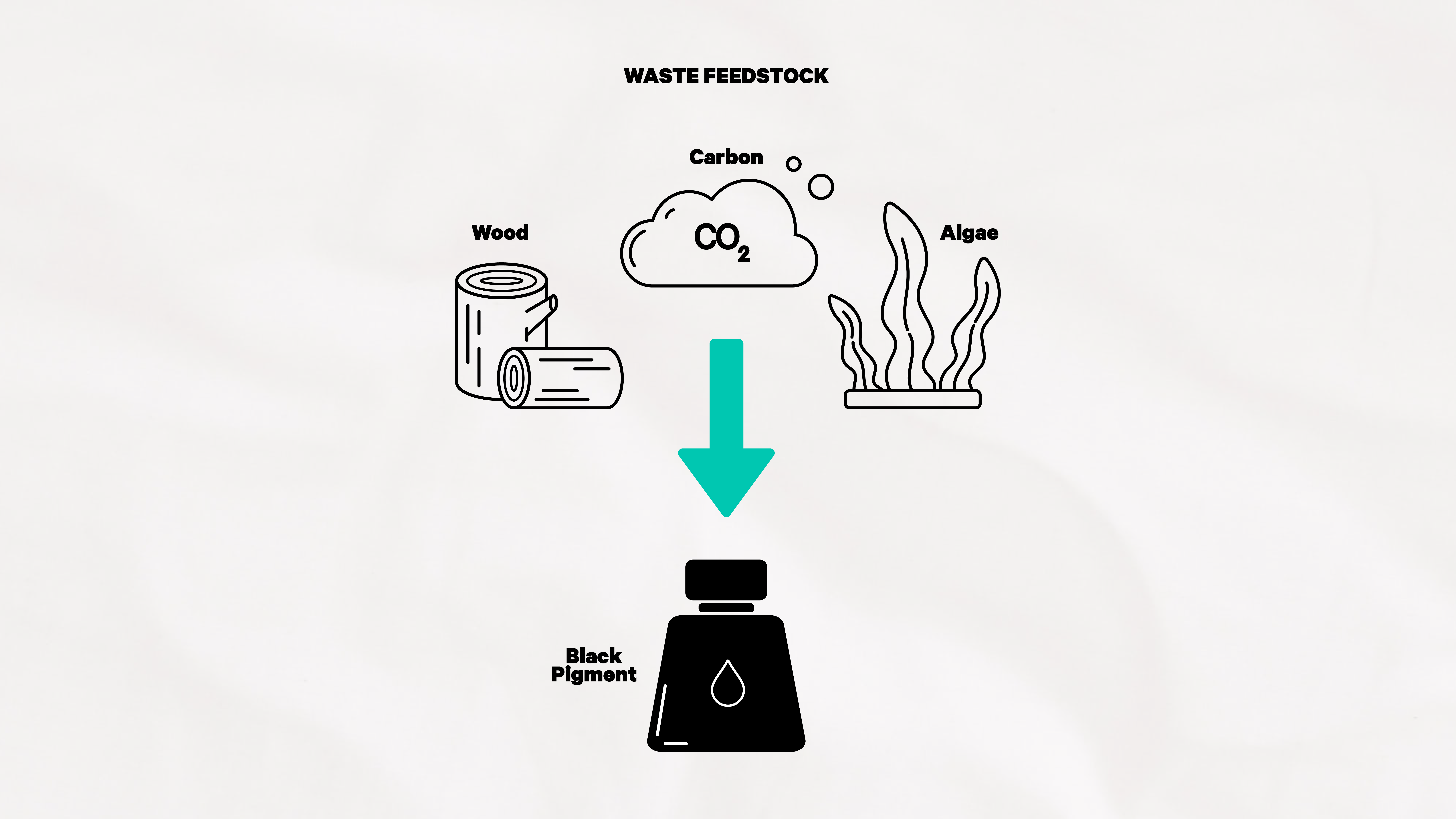
Launched by global sustainable fashion innovation platform Fashion for Good, together with partners Bestseller, Birla Cellulose, Kering and PVH Corp, the Black Pigment Pilot project will explore how black pigments derived from waste feedstocks such as industrial carbon, algae and wood could hold the key to a greener means of textile production, with a lower carbon impact.
The colour black has a long history in the fashion industry and is one of the most commonly used colours to dye apparel. Modern synthetic dyes are often derived from petro-chemical compounds, which are non-renewable and contribute to water pollution when not treated correctly, Fashion for Good explains.
Its latest project aims to develop and scale black pigment for dope dying (colouring) man-made cellulosics (MMCs) fibres and recycled polyester (rPet) yarns, evaluating the technologies of the participating innovators; Graviky Labs, Nature Coatings and Living Ink, which produce black pigment from industrial carbon emissions, wood waste and waste algae, respectively.
“Collaboration is key to making a step change in replacing the abundantly used harmful dyes in the industry, of which black is dominating. We are very excited to support this first-of-its-kind collaborative pilot aiming to validate three technologies that will enable the industry to switch to more sustainable (black) dye chemistry,” says Katrin Ley, managing director of Fashion for Good.
To date the technologies have only been used in printing applications. To develop formulations for dope dyeing, the innovators will be supported by Fashion for Good partner Birla Cellulose and Paradise Textiles, the dedicated material science and innovation hub of the Alpine Group. Birla Cellulose brings technical know-how and insights into the production of dope dyed MMC fibres, while Paradise Textiles is known for its consciously crafted collection of sustainable and performance fabrics as well as integrated, advanced manufacturing processes.
The first phase of the pilot will run until mid-2022, with Birla Cellulose and Paradise Textiles producing the first dope dyed MMCs fibres and rPet yarns respectively, using the black pigments. Participating Fashion for Good partners will have the chance to evaluate the performance, colour fastness, wearability and impact of all solutions. Successful formulations will then go on to trial larger production runs with fabrics dyed using the innovations.

US Tariffs are shifting - will you react or anticipate?
Don’t let policy changes catch you off guard. Stay proactive with real-time data and expert analysis.
By GlobalDataTo assess the performance of dope dyeing with the innovative black pigment formulations, test variables such as affinity, colour and light fastness, and tensile strength of the fibres and yarns, will be measured against dope dyeing with the standard synthetic dyes currently used in the industry. Successes in the initial trials will be developed towards scaling the project beyond fibre and yarn dyeing to textile production with the long-term goal of integrating these technologies at commercial scale in the value chain.
The Black Pigment Pilot project follows Fashion for Good’s D(R)YE Factory of the Future project which launched last month to accelerate the shift from wet to mostly dry processing, which is said to be crucial for the path towards net-zero.



